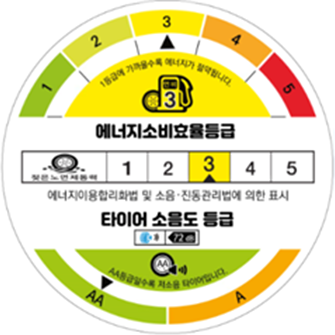Korea Energy Consumption Efficiency Labeling and Standard
In order to enable consumers to easily purchase efficient energy-saving tires, the tire energy consumption efficiency grading system consists of the energy consumption efficiency grade meter and the lowest energy consumption efficiency standard.
*According to energy efficiency and consumption of the tire, the tire is required to indicate an energy efficiency grade from 1st to 5th grade
*Minimum energy performance standard is mandatory



